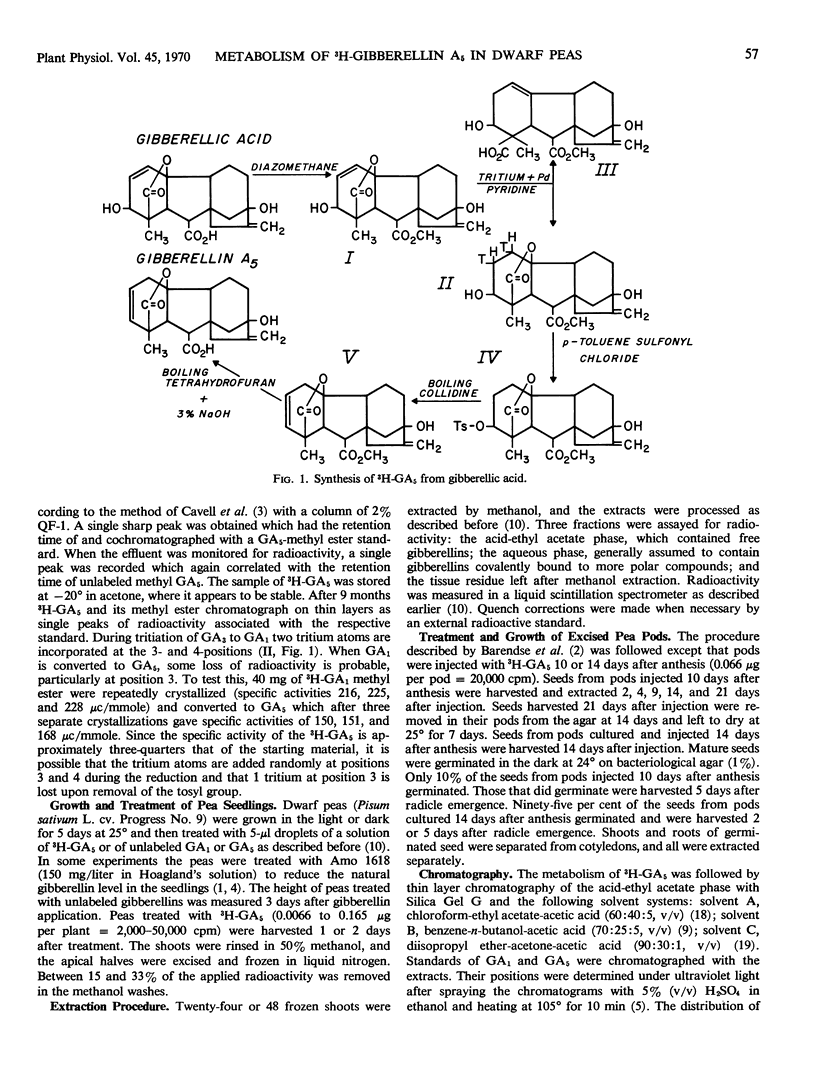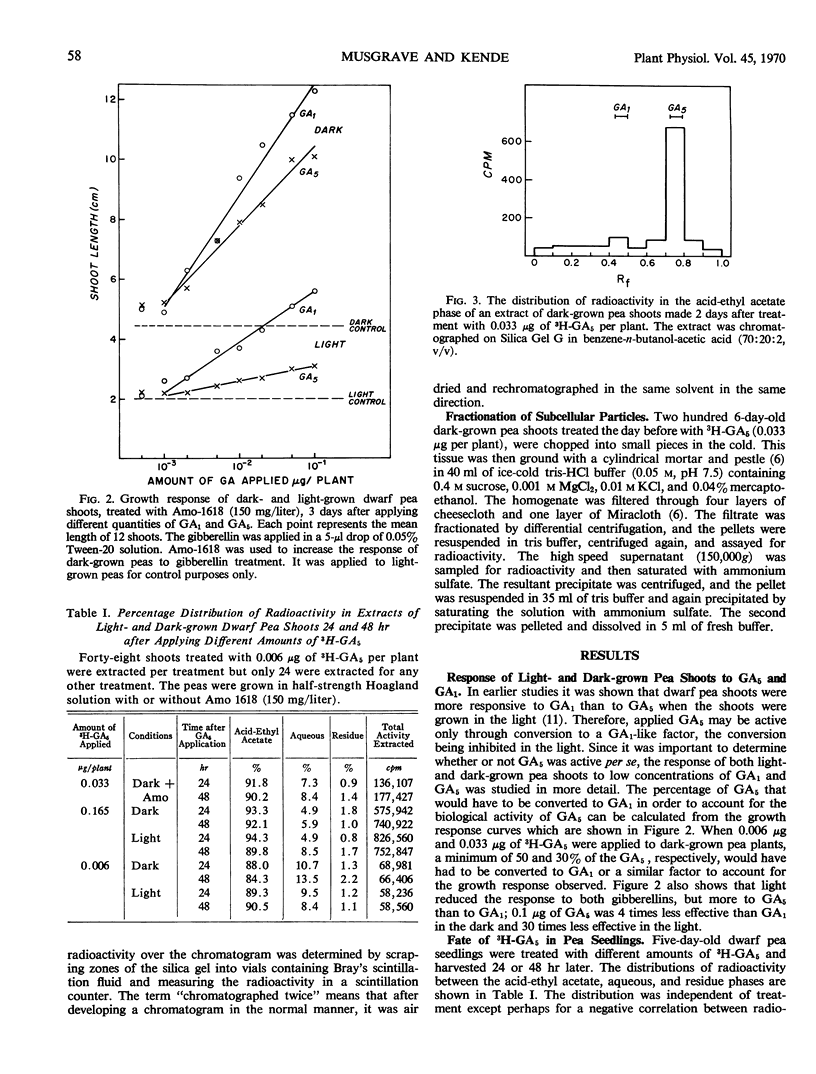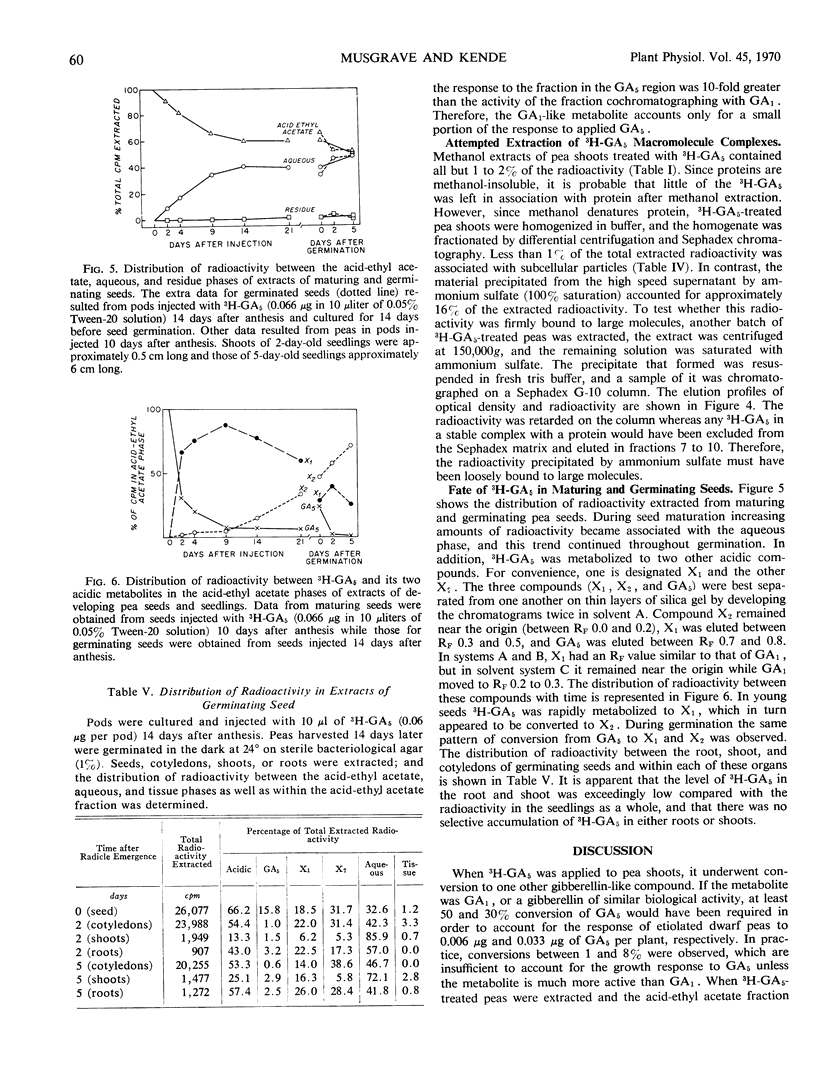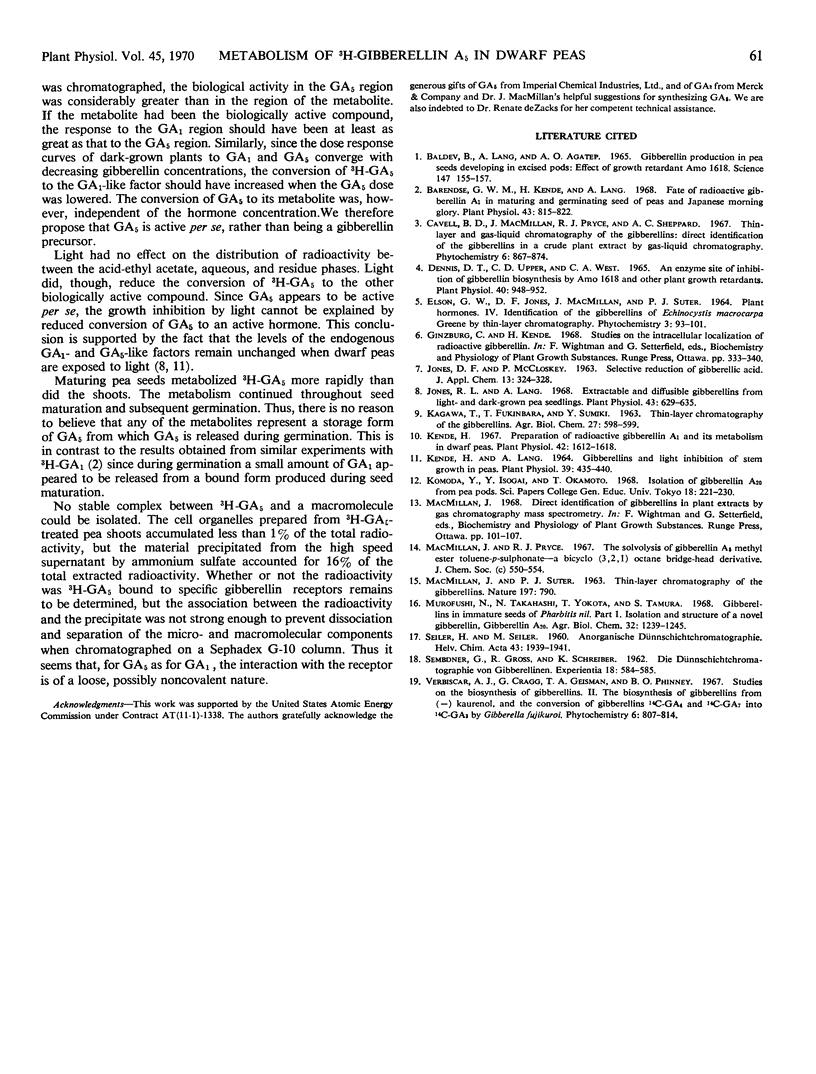Abstract
Radioactive gibberellin A5 (3H-GA5) was synthesized from gibberellic acid. When it was applied to dwarf peas grown in the dark, an average of 3% was converted to another acid gibberellin within 48 hours. The biological activity of the metabolite did not account for the response to applied GA5. GA5 is therefore assumed to be biologically active per se.3H-GA5 did not appear to form a stable complex with a macromolecule in pea shoots. When injected into dwarf pea pods, 3H-GA5 was readily metabolized by maturing seed to more water-soluble substances and to two other acidic compounds. This metabolism continued even throughout germination of the seed without reconversion of the metabolites to GA5. It is concluded that “bound” GA5 plays no part in the germination of dwarf pea seeds.
Full text
PDF





Selected References
These references are in PubMed. This may not be the complete list of references from this article.
- BALDEV B., LANG A., AGATEP A. O. GIBBERELLIN PRODUCTION IN PEA SEEDS DEVELOPING IN EXCISED PODS: EFFECT OF GROWTH RETARDANT AMO-1618. Science. 1965 Jan 8;147(3654):155–157. doi: 10.1126/science.147.3654.155. [DOI] [PubMed] [Google Scholar]
- Barendse G. W., Kende H., Lang A. Fate of radioactive gibberellin a(1) in maturing and germinating seeds of peas and Japanese morning glory. Plant Physiol. 1968 May;43(5):815–822. doi: 10.1104/pp.43.5.815. [DOI] [PMC free article] [PubMed] [Google Scholar]
- Dennis D. T., Upper C. D., West C. A. An enzymic site of inhibition of gibberellin biosynthesis by Amo 1618 and other plant growth retardants. Plant Physiol. 1965 Sep;40(5):948–952. doi: 10.1104/pp.40.5.948. [DOI] [PMC free article] [PubMed] [Google Scholar]
- Jones R. L., Lang A. Extractable and Diffusible Gibberellins From Light- and Dark-grown Pea Seedlings. Plant Physiol. 1968 Apr;43(4):629–634. doi: 10.1104/pp.43.4.629. [DOI] [PMC free article] [PubMed] [Google Scholar]
- Kende H., Lang A. Gibberellins and Light Inhibition of Stem Growth in Peas. Plant Physiol. 1964 May;39(3):435–440. doi: 10.1104/pp.39.3.435. [DOI] [PMC free article] [PubMed] [Google Scholar]
- Kende H. Preparation of radioactive gibberellin a(1) and its metabolism in dwarf peas. Plant Physiol. 1967 Nov;42(11):1612–1618. doi: 10.1104/pp.42.11.1612. [DOI] [PMC free article] [PubMed] [Google Scholar]
- SEMBDNER G., GROSS R., SCHREIBER K. [Thin layer chromatography of gibberellins]. Experientia. 1962 Dec 15;18:584–585. doi: 10.1007/BF02172196. [DOI] [PubMed] [Google Scholar]


